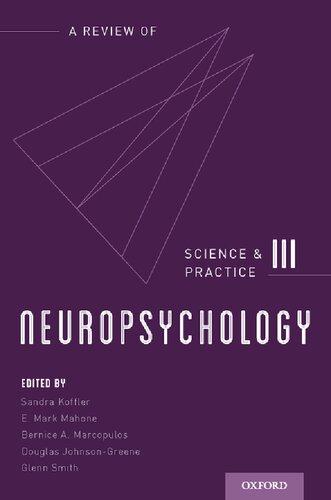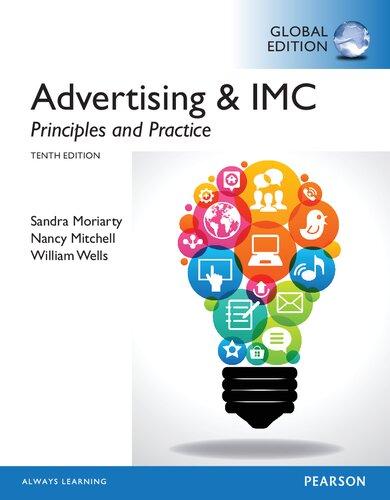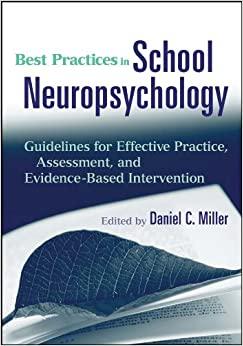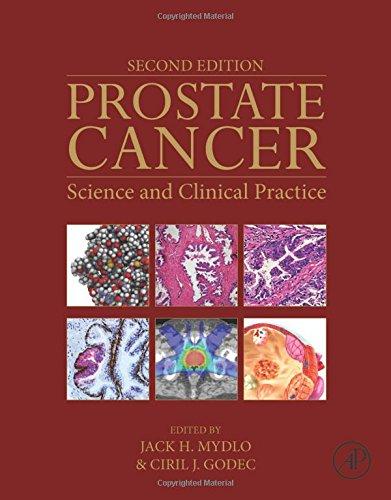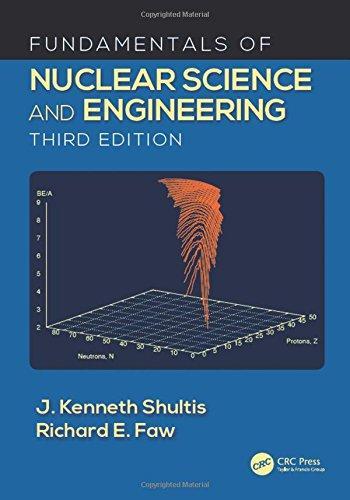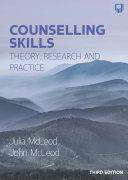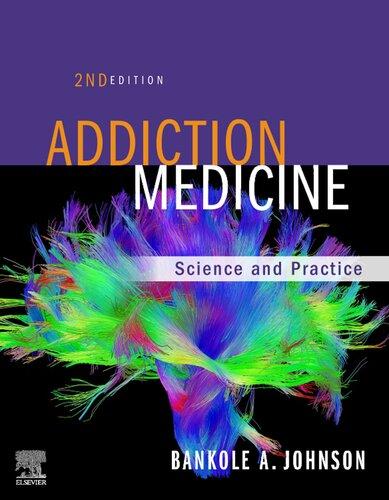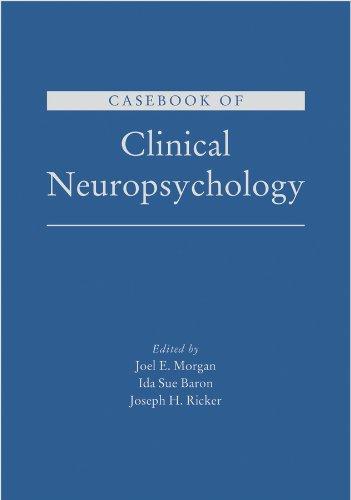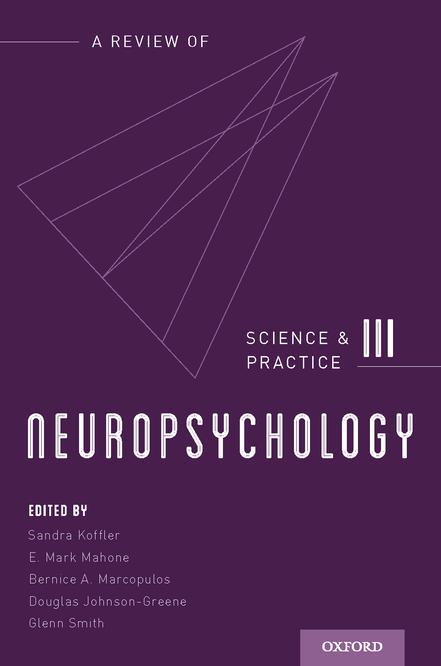PREFACE TO VOLUME III
This, the third volume of the series Neuropsychology: A Review of Science and Practice, will provide the reader with timely and comprehensive reviews of the literature relevant to clinical neuropsychology and related professions. Unique to this series, the practitioner, investigator, and student will find that the chapters in Volume III contribute to practice in its most broad definition: in the office, the laboratory, and the classroom. The reviews in this volume provide resources for furthering ongoing research, providing incentives for new studies and enhancing our value and service to patients. Following is a brief summary of the chapters.
In Chapter 1, on cannabis and neurocognition, Pacheco- Colón, Duperrouzel, and Gonzalez report their review of 30 neurobehavioral and neuroimaging studies. They found that the non-acute effects of cannabis use are heterogeneous, but earlier onset and heavier use are associated with memory and executive functioning deficits in adults. The effects on adolescents are mixed. The authors conclude that in order to further understand the long-term effects of cannabis use, confounding variables such as cannabis composition and potency must be considered.
In Chapter 2, literature on arteriosclerosis, the small vessel disease of the brain, is reviewed by Kaplan and Strainge for its association with age-related cognitive decline, dementia, and possible late-life depression. The association of hypertension and aging as risk factors for small vessel disease is reviewed, as well as the significant diagnostic studies that identify the associated brain lesions. Studies on the moderating factor of cognitive reserve and the implications for clinical practice are presented.
Drs. Parsons and Kane, in Chapter 3, provide a state-of-the-art technology review of technology-enhanced assessment for the field of neuropsychology. The authors consider advances in technology-enhanced assessment of specific conditions such as attention deficit disorder, concussion, and cognitive aging. They discuss the different platforms (e.g., web-based vs. tablet-based) for administering more classic assessment paradigms. Parsons and Kane explore how neuropsychology practitioners may engage in telemedicine to expand access to clinical services. They further explore how technology can be deployed to enhance ecologically valid assessments. This chapter is a primer on how ubiquitous technology is changing the status quo.
Chapter 4, on cross-cultural tests, reviews recent literature on cross-cultural neuropsychological assessment with a focus on adults. Three methods for addressing this issue are evaluated by Fernández and Marcopulos: (1) adapting existing tests through language translation and norm development; (2) developing new tests specific to the culture of interest; and (3) developing universal tests that can be adapted and used with any language and culture.
In Chapter 5, on interventions for functional impairments, Weakley and SchmitterEdgecombe observe that many neurological conditions result in functional deficits with an inability to perform occupational tasks and activities of daily living that are necessary for a person to remain living independently. Neuropsychological tests enable us to understand the relationship between cognitive and functional impairments and provide evidenced-based interventions. This chapter highlights cognitive intervention approaches, compensatory strategies, and assistive technology, such as virtual reality, aimed at improving and promoting functional independence and quality of life for persons with functional impairments.
Chapter 6, on the neuropsychological effects of HIV, summarizes an extensive literature pertaining to cognition and HIV, including the latest findings on HIVassociated neurocognitive disorders (HAND) and the influence of clinical, demographic, and other moderating factors. Sheppard, Tierney, Sullivan, Kordovski, Avci, and Woods review the latest data on prevalence and screening and the impact of HAND on functioning, as well as its treatment with pharmacological interventions and cognitive rehabilitation.
The cognitive findings in patients with Parkinson’s disease are reviewed by Tröster in Chapter 7, with emphasis on the role of clinical neuropsychology in documenting the changes that may take place. Included are studies evaluating individuals at risk for Parkinson’s disease, the Parkinson’s associated risk Syndrome (PARS), and persons who are genetically at risk. Mild cognitive impairment is reviewed with respect to different presentations (subtypes) and their implication for further cognitive decline. The validity of differences in screening instruments is discussed.
Epilepsy is a common neurological disorder among children but is not unitary; rather, epilepsy is a complex set of disorders that often co-occur with several other neurodevelopmental disorders. In Chapter 8, on pediatric epilepsy, Berl provides an opportunity for neuropsychologists to update their practice and contributes to our understanding of the field, reporting advances in neurosurgery, genetics, pharmacological treatment, neuroimaging, and big data analysis.
CONTRIBUTORS
Gunes Avci
Department of Psychology
University of Houston
Houston, Texas
Madison M. Berl
Division of Neuropsychology
Children’s National Health System
Washington, DC
Jacqueline C. Duperrouzel
Center for Children and Families
Department of Psychology
Florida International University Miami, Florida
Alberto Luis Fernández
Department of Psychology
Universidad Católica de Córdoba
Universidad Nacional Córdoba
Cordoba, Argentina
Raul Gonzalez
Center for Children and Families
Department of Psychology
Florida International University
Miami, Florida
Robert Kane
Cognitive Consults and Technology, LLC
Washington, DC
Richard F. Kaplan
Departments of Psychiatry and Neurology
University of Connecticut Health
Farmington, Connecticut
Victoria M. Kordovski Department of Psychology
University of Houston Houston, Texas
Bernice A. Marcopulos Department of Graduate Psychology
James Madison University Harrisonburg, Virginia
Department of Psychiatry and Neurobehavioral Sciences University of Virginia Charlottesville, Virginia
Ileana Pacheco- Colón Center for Children and Families Department of Psychology
Florida International University Miami, Florida
Thomas D. Parsons
Computational Neuropsychology and Simulation Laboratory
NetDragon Digital Research Center Department of Learning Technologies University of North Texas Denton, Texas
Maureen Schmitter-Edgecombe Department of Psychology
Washington State University Pullman, Washington
David P. Sheppard
Department of Psychology University of Houston Houston, Texas
Lauren Strainge Department of Psychological Sciences
University of Connecticut Stores, Connecticut
Kelli L. Sullivan
Department of Psychology
University of Houston Houston, Texas
Savanna T. Tierney Department of Psychology University of Houston Houston, Texas
Alexander I. Tröster Department of Clinical Neuropsychology and Center for Neuromodulation
Barrow Neurological Institute Phoenix, Arizona
Alyssa Weakley Department of Psychology Washington State University Pullman, Washington
Steven Paul Woods Department of Psychology University of Houston Houston, Texas
Studies in Cannabis Use
Year in Review
Ileana Pacheco- Colón, Jacqueline C. Duperrouzel, and Raul Gonzalez
INTRODUCTION
Many patients presenting for neuropsychological assessments, in either the clinic or the laboratory, have used cannabis at some point in their lives. During 2015, 44% of Americans over 12 years of age reported ever having used the drug and 8.3% endorsed past-month use (Center for Behavioral Health Statistics and Quality, 2016). Among 12th graders, 45% have used cannabis and 23% have used in the past month (Johnston, Miech, O’Malley, Bachman, & Schulenberg, 2016). Annual prevalence of use rose from 24% during 1991 to 36% during 2016 among 12th graders. Concurrently, public opinion toward legalization of cannabis has become more permissive. When the Pew Research Center began surveying, in 1969, public opinion toward cannabis legalization, 12% supported legalization, whereas 84% did not (Pew Research Center, 2016). A reversal occurred more recently, with 57% of Americans supporting and 37% opposing cannabis legalization during 2016. Consistent with these trends, 28 U.S. states have passed medical marijuana laws and 8 have legalized recreational use for adults over the age of 21. These trends can also be observed around the world. For instance, Uruguay legalized recreational use, while other countries such as Germany, Canada, Argentina, Czech Republic, Italy, and Mexico have passed medical marijuana legislation. Also, in countries like the Netherlands and Spain, cannabis use is decriminalized and largely tolerated.
Cannabis and its constituents are also the subject of research efforts focused on medical applications. Results from studies examining the effectiveness of cannabis as medicine suggest that it may be effective for treating nausea among patients with cancer, anorexia among those with cancer or HIV, pain among patients with HIV or multiple sclerosis (MS), and urinary dysfunction in those with MS (Borgelt, Franson, Nussbaum, & Wang, 2013; Koppel et al., 2014). A recent meta-analysis examined 79 clinical trials and concluded that cannabinoids may be beneficial for nausea and vomiting, pain reduction, and reduced spasticity (Whiting et al., 2015). If the trend for medical cannabis continues to grow, one can expect additional patients presenting for
neuropsychological assessment with cannabis included in their list of medications, particularly considering that many of the medical applications to date have focused on disorders that affect the central nervous system (e.g., MS, epilepsy, HIV). Thus, it could be argued that it is now more important than ever for neuropsychologists to be aware of the effects of cannabis on neurobehavioral functioning in order to consider its impact on observed test results and inform diagnostic decision-making.
The effects of cannabis on the central nervous system occur primarily through activity at cannabinoid receptor type 1 (CB1) (Pertwee, 2006, 2008). CB1 receptors are located throughout the cortex and densely concentrated in numerous brain regions important for cognition and psychomotor functioning (Glass, Faull, & Dragunow, 1997). Thus, it is not surprising that cannabis use (particularly when use is regular) has an impact on neurobehavioral functioning. Two meta-analyses synthesized results from studies examining associations between cannabis use and neuropsychological functioning. Both focused on non-acute effects (i.e., when participants were not acutely intoxicated) and included only studies that attempted to control for critical confounds that would otherwise hamper interpretation of findings. The meta-analysis by Grant, Gonzalez, Carey, Natarajan, and Wolfson (2003) included 15 studies, resulting in data from 704 cannabis users and 484 non-using controls. Levels of cannabis use varied widely across and within study samples, ranging from one to seven times per week to at least 22 days out of the previous 30 days. Overall, evidence emerged for a “residual cannabis effect” that was statistically significant but small in magnitude (effect size [ES] = −.15, 99% confidence interval [CI] [−.29, −.02]), suggesting that cannabis users’ neuropsychological performance was about one-sixth of a standard deviation (SD) worse than that of controls. For individual neuropsychological domains, the only statistically significant effects were observed for learning (ES = −.21, 99% CI [−.39, −.02]) and forgetting (ES = −.27, 99% CI [−.49, −.04]). A more recent meta-analysis by Schreiner and Dunn (2012) used guidelines for study inclusion and grouping of neurocognitive domains that were similar to those used by Grant et al. (2003) but included only studies published since 2000, to minimize overlap. Their analyses included 33 studies, yielding 1,010 cannabis users and 839 controls. An overall negative association between cannabis use and neuropsychological functioning was also observed (ES = −.29, 95% CI [−.46, −.12]).
Significant detrimental effects of cannabis use were observed for learning (ES = −.35, CI 95% [−.55, −.15]) and forgetting/retrieval (ES = −.25, CI 95% [−.47, −.02]), abstraction/executive functions (ES = −.21, CI 95% [−.38, −.05]), attention (ES = −.36, CI 95% [ES = −.56, −.16]), motor skills (ES = −.34, CI 95% [−.57, −.11]), and verbal/language (ES = −.23, CI 95% [−.47, −.001]). Thus, both meta-analyses suggest that cannabis use is associated with poorer neuropsychological functioning, with the magnitude of these effects hovering around one-third of a standard deviation.
This chapter reviews key studies published mainly in 2016 focusing on cannabis and neurobehavioral functioning, as well as those focusing on neuroimaging outcomes. With the exception of a few studies, we focused on studies examining effects of cannabis when individuals were not acutely intoxicated (as would be the usual case in the clinic or laboratory). Our review is organized such that new review
articles and meta-analyses are discussed first, followed by new cross-sectional studies, and finally a review of new longitudinal studies. Cross-sectional studies continue to yield valuable insights into the effects of cannabis and have been valuable in advancing research in this area. Yet, they have an important limitation: they preclude making strong causal inferences between use of cannabis and declines in neuropsychological functioning. They do not answer the question, “Does cannabis use cause declines in neuropsychological functioning?” Studies that assess how changes in cannabis use prospectively influence changes in neuropsychological functioning, compare neuropsychological performance before and after onset of cannabis use, or make use of co-twin designs are more apt for inferring causation. Thus, we review these studies separately. Although such studies have been rare in the past, they are now rapidly emerging. Each section is further subdivided into neurobehavioral and neuroimaging studies. Finally, we briefly summarize some notable studies that do not fall neatly into the aforementioned categories but that we thought would still be of interest to readers. We then offer a summary and conclusion.
REVIEWS AND META- ANALYSES
Neurobehavioral Studies
Several reviews examining the links between cannabis use and neurocognition were published in 2016. Ganzer, Bröning, Kraft, Sack, and Thomasius (2016) conducted a systematic review of 38 studies between 2004 and 2015 examining the residual neurocognitive effects of cannabis use in adolescents and adults after a prolonged period of abstinence. Overall, the findings regarding neurocognition were heterogeneous. Most studies reported some deficits in attention or concentration in abstinent cannabis users, as well as in different aspects of memory. There were, however, mixed findings in the domains of inhibition, impulsivity, visuospatial functioning, and decision-making. Although not many studies examined motor function, most of those that did reported worse performance in abstinent users relative to non-using controls even after prolonged abstinence. Furthermore, results suggested that neuropsychological functioning in individuals who initiated cannabis use at an earlier age was not significantly different from that of individuals with a later age of onset (Ganzer et al., 2016).
On the other hand, a review by Curran et al. (2016) identified episodic memory impairments as the most consistently reported long-term effects of cannabis use, while findings for working memory, attention, and impulsivity were mixed. Somewhat similarly, Broyd, van Hell, Beale, Yücel, and Solowij (2016) identified verbal learning and memory as the neurocognitive domain most consistently impaired by acute and long-term cannabis use. This review suggested that impairments in working memory, attention, and psychomotor performance are observed with acute cannabis intoxication, and may persist with chronic cannabis exposure, but are often resolved with long periods of abstinence (Broyd et al., 2016). Different subdomains of executive functioning also appear to be differentially affected by acute and chronic cannabis
exposure. Specifically, there are clear acute impairments in inhibition, but the effects on planning, problem solving, reasoning, and interference control are mixed (Broyd et al., 2016).
Overall, findings on the effects of cannabis use on neurocognition appear heterogeneous. As a possible explanation for this heterogeneity, Volkow et al. (2016) posited that the magnitude of neurocognitive impairment and the persistence of this impairment after abstinence may depend on factors such as frequency and duration of cannabis use, age of onset, and the length of the abstinence period. Furthermore, the aforementioned reviews identify gaps in our knowledge and suggest areas for future investigation, such as the neurocognitive effects of varying levels of cannabis use at different stages of neural development (such as during adolescence), as well as elucidating the effects of different types of cannabis (high vs. low potency; different ratios of tetrahydrocannabinol [THC] to cannabidiol [CBD]) on neurocognition (Broyd et al., 2016; Curran et al., 2016; Ganzer et al., 2016; Volkow et al., 2016).
Finally, Schoeler, Kambeitz, Behlke, Murray, and Bhattacharyya (2016) conducted a meta-analysis investigating the effects of cannabis on memory performance in healthy individuals and patients with psychosis. Across 88 studies comprising 7,697 healthy participants and 3,261 patients with psychosis, results revealed moderate effect sizes suggesting that cannabis use in healthy individuals was associated with significantly impaired prospective memory, and small effect sizes for impaired global, verbal immediate and delayed recall, and visual recognition. In those with psychosis, however, there were small to moderate effect sizes suggesting that cannabis use was associated with better global memory, visual immediate recall, and recognition relative to healthy cannabis users. Healthy cannabis users had higher depression scores than age-matched non-users, and cannabis-using patients had lower depression levels and were of a younger age than non-using patients. Thus, while cannabis appears to have differential effects on memory for users with and without psychotic disorders, these differences may have been due to the confounding influences of variables like depression and age. Specifically, the lower level of depression and younger age of the cannabis-using patients with psychosis may have attenuated the adverse effects of cannabis on memory. Furthermore, longer duration of abstinence reduced cannabis effects on memory across groups.
Neuroimaging Studies
Lorenzetti et al. (2016) conducted a review of 13 functional magnetic resonance imaging (fMRI) studies that involved tasks assessing working memory (e.g., N-back), inhibition (e.g., go/no-go), and reward processing (e.g., monetary incentive delay [MID]) in adolescents. All studies reviewed cross-sectionally compared healthy nonusing controls to cannabis user groups, with most samples smoking a mean of 400 lifetime occasions. Results suggested altered brain function in the frontal-parietal network, a network thought to mediate cognitive control, particularly among heavier users. Abnormalities reported across studies were heterogeneous across tasks, yet hyperactivity in the posterior parietal region and medial prefrontal cortices was
consistently cited relative to non-cannabis-using controls. Hyper- and hypoactivity of anterior cingulate cortex, superior frontal regions, and cerebellum were also reported in abstinent users compared to controls. However, despite observed differences in brain activation, there were no significant differences in behavioral task performance between adolescent cannabis users and controls. The study samples reviewed were relatively small (n = 7–28) and consisted of mostly male participants with an average age of 18, which may limit the generalizability of these findings to other adolescent cannabis users. Furthermore, few of these studies controlled for the influence of potential confounds, such as other substance use and mental health problems.
Another review of 31 structural neuroimaging studies examined associations between levels of cannabis use and neuroanatomical alterations among adolescents and adults (Lorenzetti, Solowij, & Yücel, 2016). Brain regions most consistently reported as altered relative to non-using controls were the hippocampus (reductions in volume and shape), amygdala, striatum, cerebellum, and orbitofrontal, parietal, and insular cortices. Unsurprisingly, these regions, which are dense in CB1 receptors, are thought to be most vulnerable to the neurotoxic properties of high levels and exposure to THC during adolescence. The authors noted that CBD, a potentially therapeutic compound found in cannabis, may provide neuroprotection to these regions. Of note, recent changes in cannabis composition and potency may contribute to these neural alterations, as low levels of CBD and high levels of THC are common in recreational cannabis. Despite these findings, the wide array of measurements of cannabis use and cannabinoid levels (i.e., dose, frequency, duration, age of onset) reported across studies continues to be a limitation.
Similarly, a review by Weinstein, Livny, and Weizman (2016) of 103 structural and functional studies suggested differences in gray matter and white matter volumes, blood oxygenation level–dependent (BOLD) response, and neurotransmitter release between cannabis users (i.e., regular and recreational users) and non-users. Definitions of regular cannabis use varied across studies. The authors concluded that regular cannabis use was associated with no global structural changes, although alterations were consistently reported in the hippocampus and parahippocampus, as well as frontal and cerebellar regions. Additionally, alterations in BOLD response in structures implicated in executive functioning, decision-making, attention, memory, inhibitory control, and emotional processing were identified among users when compared to non-users during functional and resting-state neuroimaging. Structures with such alterations included the anterior cingulate, dorsolateral prefrontal cortex, orbitofrontal cortex, amygdala, ventral tegmental area, thalamus, and striatum. Reduced BOLD activity in limbic regions (i.e., amygdala and anterior cingulate) was also consistently reported in cannabis users across multiple studies, suggesting a disruption in emotional processing. Consistent findings of increased striatal dopamine release (i.e., via [11C]-racloprid binding measurement in positron emission tomography [PET] imaging) in cannabis users and healthy volunteers under acute THC administration were also reviewed, highlighting cannabis effects on dopamine transmission and its influence as a possible rewarding and motivating mechanism for continued use. Furthermore, the pharmacological studies examined
suggested opposing effects of CBD and THC, with THC often inducing psychotic symptoms and CBD acting as an antipsychotic and anxiolytic agent.
CROSS- SECTIONAL STUDIES
Neurobehavioral Studies
Several cross-sectional studies published in 2016 examined the impact of age of onset of cannabis use on adult neurocognitive performance. For instance, Schuster, Hoeppner, Evins, and Gilman (2016) examined the association between age of onset and learning impairments in a sample of 48 young adults who reported using cannabis at least once a week, as compared to 48 age- and sex-matched non-users. Users were classified according to age of first use, with early use defined as use at or before age 16, and late use defined as use after age 16. Cannabis users with early onset showed lower overall learning and worse delayed recall performance on the California Verbal Learning Test–II (CVLT-II) than late-onset users and controls. However, once delayed recall was adjusted based on the learning phase of the CVLTII, there were no significant between-group differences in delayed recall. Early-onset users also evidenced significantly less semantic clustering than controls, though this difference in learning strategy use did not mediate the association between onset of cannabis use and delayed recall. Thus, these results suggest that the poor memory performance typically associated with cannabis use may be explained by factors such as age of onset and learning inefficiencies.
Similarly, Dahlgren, Sagar, Racine, Dreman, and Gruber (2016) assessed the impact of different patterns of cannabis use on executive functioning, as measured by the Stroop Color and Word Test and the Wisconsin Card Sorting Task (WCST). Participants were 44 adult chronic, heavy cannabis users (used at least five times per week) and 32 non-users. Users were subdivided into early onset (regular use before age 16) and late onset (regular use at or after age 16), with “regular use” broadly defined as cannabis use on a routine, expected, and consistent basis. Cannabis users showed poorer performance on both the Stroop and WCST relative to non-users. These differences, however, were driven by the performance of the early-onset cannabis users; late-onset users’ performance was similar to that of non-users. The association between early onset and poorer performance on WCST was still present after accounting for frequency and amount of weekly cannabis use, suggesting that age of onset of regular cannabis use uniquely contributed to executive functioning impairments. Though these findings are compelling, they are based on a sample of heavy cannabis users and thus may not be generalizable to more occasional cannabis users.
Taken together, these cross-sectional studies suggest that poor neurocognitive performance by cannabis users may be explained, at least in part, by age of onset. However, different definitions of “age of onset” make these findings harder to interpret. While Schuster et al. (2016) classified users based on age of first use, Dahlgren et al. (2016) classified them based on age of onset of “regular” cannabis
use (i.e., age at which they began using cannabis on a routine and consistent basis). Even though both studies found that age of onset was important, future research should examine whether age of first use or age of onset of regular use has a greater impact on later outcomes and should be consistent in defining “regular” use in order to facilitate better interpretation of findings (Crane, Schuster, Mermelstein, & Gonzalez, 2015). Furthermore, although both studies used age 16 years as a cutoff point between early and late onset, one classified age 16 onset as early and the other as late onset.
Another set of cross-sectional studies from 2016 examined the effects of cannabis on various domains of neurocognition. For instance, Hirst, Young, Sodos, Wickham, and Earleywine (2017) sought to explore whether the commonly reported neurocognitive impairments in cannabis users could be due to a lack of effort put forth during testing. They examined effort as a potential mediator of the association between cannabis use and learning/memory performance in a sample of 62 youngadult chronic cannabis users, defined as those using at least 4 days a week over the past year. Participants completed a neurocognitive battery, which included tests such as the CVLT-II and the Rey Complex Figure Test, as well as the Word Memory Test, which assesses effort. Hirst et al. (2017) found that frequent cannabis users had higher scores on the CVLT-II, thus failing to replicate previous research. However, frequent cannabis use was associated with decreased effort, underscoring the importance of assessing effort with this population.
In order to examine the combined effects of cannabis and tobacco use on neurocognition, Schuster, Mermelstein, and Hedeker (2016) employed an ecological momentary assessment protocol in a sample of 287 community young adults. The protocol involved a 7- day data-monitoring period in which participants used handheld computers to complete assessments in real time. The devices provided random prompts to the participants multiple times a day. Participants were also instructed to initiate assessments immediately after smoking tobacco. During both random and participant-initiated prompts, participants indicated whether they had used cannabis or alcohol in the past hour. During these prompts, participants also completed a brief spatial working memory task. Using a withinsubjects design, results indicated that working memory was poorer with cannabis use (as well as alcohol use), but better with tobacco use. There was no interaction between cannabis and tobacco use. Thus, tobacco use may compensate for the adverse effects on working memory among young-adult cannabis users, as previously suggested in the context of episodic memory (Schuster, Crane, Mermelstein, & Gonzalez, 2015).
Neuroimaging Studies
Jakabek, Yücel, Lorenzetti, and Solowij (2016) conducted a cross-sectional study using diffusion tensor imaging (DTI) examining differences in white matter structure in a sample of 56 regular cannabis users compared to 20 non-users. White matter integrity was assessed by deriving fractional anisotropy (FA),
axial diffusivity, and radial diffusivity maps from diffusion-weighted images. Correlational analyses examined associations between the diffusion measures and factors such as age of onset, as well as duration, frequency, and dose of current cannabis use. Results revealed lower FA for cannabis users in the forceps minor tract. Younger users also showed predominantly reduced axial diffusivity, while older users showed higher radial diffusivity in widespread tracts. Duration of cannabis use was also associated with higher axial diffusivity in the cingulum angular bundle. These findings suggest that cannabis use may alter normal brain maturation, and this effect may be age related.
A cross-sectional study conducted by Orr, Paschall, and Banich (2016) used DTI, voxel-based morphometry, and shape analyses to examine the white matter integrity and subcortical morphometry in a subset of adult recreational cannabis users (n = 466) from the Human Connectome Project (HCP) consortium, a large database of neuroimaging data from a community sample. Participants completed the Semi-Structured Assessment for the Genetics of Alcoholism, a self-report measure used to quantify the number of times used and age of first use of cannabis on a 5point ordinal scale. Similar to Jakabek et al.’s (2016) study, white matter integrity was measured by deriving FA, axial diffusivity, radial diffusivity, and mean diffusivity maps from diffusion-weighted images. Also, analyses of voxelwise gray matter morphometry were conducted to examine the effects of cannabis on cortical and subcortical volumes, as well as cortical thickness across several regions of interest (ROIs). Finally, shape analyses of subcortical ROIs (hippocampus, amygdala, nucleus accumbens) were conducted. All analyses included age, sex, years of education, and use of alcohol and tobacco as covariates. Results revealed that earlier age of onset of cannabis use was associated with lower white matter coherence, as evidenced by lower FA and higher radial diffusivity in long-range tracts, suggesting that adolescent cannabis use may impact the development of white matter tracts. Although there were no associations between cannabis use and cortical volume, earlier age of onset was associated with abnormalities in nucleus accumbens shape, while number of lifetime uses was linked to differences in the shape of the amygdala and hippocampus. Thus, these findings suggest that earlier onset of cannabis use is associated with subtle structural changes in subcortical regions that are consistently implicated in the process of addiction.
Additionally, Rigucci et al. (2016) used DTI to examine the effects of cannabis potency on the microstructure of the corpus callosum in a sample of 56 first-episode psychosis patients (37 of whom were cannabis users) and 43 healthy adults (22 of whom were cannabis users), using similar metrics to those in the studies discussed earlier. Frequent users of high-potency (i.e., high levels of THC and low levels of CBD; “skunk-like”) cannabis had higher mean and axial diffusivity in the corpus callosum than users of low-potency cannabis (i.e., hash-like) and non-users, with no effect in the psychosis group, suggesting that corpus callosum integrity may be highly sensitive to high levels of THC. These findings highlight the importance of examining the effects of varying potencies, especially as use of high-potency cannabis is becoming increasingly prevalent.
LONGITUDINAL STUDIES
Neurobehavioral Studies
In a prospective cohort study, Mokrysz et al. (2016) examined the association between adolescent cannabis use and IQ and educational outcomes in a sample of 2,235 adolescents from the Avon Longitudinal Study of Parents and Children. IQ was assessed at ages 8 and 15, and educational performance data were collected at ages 10–11 and 16. Users were categorized into five levels based on their cumulative cannabis use frequency. Results indicated that cannabis users who had used cannabis at least 50 times by age 15 had lower IQ and poorer educational performance at age 15 than those who had never used cannabis. However, after accounting for a variety of potentially confounding variables, including pre-exposure IQ and educational performance, maternal and early life factors, childhood behavioral problems, mental health, and adolescent use of other drugs, these associations were no longer significant. Of these factors, cigarette use was the most influential in predicting educational outcome. These findings highlight the importance of accounting for potentially confounding factors when examining the associations between cannabis use and various outcomes. Of note, because the levels of cannabis use reported in this sample were modest, it is possible that associations between cannabis use and IQ and educational outcomes may manifest at higher levels of use.
Another longitudinal study, by Fishbein et al. (2016), examined the neurocognitive characteristics associated with early onset of cannabis use. They followed a sample of 465 substance-naïve adolescents from a high-risk community from ages 10–12 at baseline to ages 12–15. Participants underwent testing spanning multiple neurocognitive domains, including IQ, memory, attention, decision-making, emotional perception, and other executive functions. Results from a stepwise regression model revealed significant associations between initiation of cannabis use and baseline performance on neurocognitive tests, particularly on an Emotional Stroop Task, a task in which children are asked to state the color that an emotional word (positive or negative) is written in while disregarding the content of the word and which assesses cognitive processing interference generated by emotional stimuli, as well as the Facial Recognition Task (FACES). Specifically, misattribution of sad faces on the FACES task and greater interference for positive than for neutral words on the Emotional Stroop Task best predicted initiation of cannabis use. However, after controlling for age, sex, and caregiver education, misattribution of sad faces on the FACES task was the only significant predictor of initiation. The authors concluded that deficits in perception of emotions may be a risk factor associated with early-onset cannabis use. It is important to note, however, that this study focused on initiation of cannabis use; more research is needed to understand the neurocognitive effects associated with escalation in cannabis use.
Notably, Jackson et al. (2016) employed a co-twin design examining associations between cannabis use and neurocognition using a sample of 3,066 twins from two longitudinal cohorts. Twins from the Risk Factors for Antisocial Behavior (RFAB) study underwent IQ testing at ages 9–10 and then again at 19–20, while those from
the Minnesota Twin Family Study (MTFS) underwent IQ testing at ages 11–12 and 17–19. Participants were classified as cannabis users or non-users, with users further classified on the basis of whether they had used 30 or more times, as well as whether they had been daily users for a period lasting 6–12 months. Across both cohorts, results from mixed-effects linear regression revealed significant decreases over time in Vocabulary and Information subtest performance in users relative to non-users. After controlling for the confounding effects of age, sex, race, zygosity, and socioeconomic status, these differences persisted in the RFAB cohort but not in the MTFS cohort. There were no differences in performance over time when participants were classified on the basis of their patterns of use. Most importantly, results from the co-twin control analyses revealed that changes in IQ did not differ for twin pairs discordant for cannabis use. In other words, there were no differences in neurocognitive performance over time between cannabis-using twins and their abstinent siblings, regardless of zygosity or frequency of use. Thus, these results suggest that observed differences in IQ between users and non-users may not be a direct result of cannabis use but rather of confounding familial factors that influence both initiation of substance use and IQ.
Additionally, a small, preliminary longitudinal analysis by Gruber et al. (2016) examined the impact of medical marijuana on executive functioning in a sample of 11 adults. To be included in the study, participants had to be either cannabis-naïve or abstinent for at least 10 years prior to study entry. All participants had a valid certification for medical marijuana as prescribed for a variety of conditions, including anxiety, depression, sleep problems, and chronic pain. Participants completed executive functioning assessments at baseline and 3-month follow-up. Results indicated that, in general, patients experienced significant improvement in measures of executive functioning at the follow-up visit, namely the Stroop Color and Word Test and the Trail Making Test, such that they were faster but equally accurate. Furthermore, although there were no significant improvements in the WCST or the letter-number sequencing task, there were trends suggesting slight improvements. Although the influence of practice effects could not be ruled out, the authors noted that practice effects are typically observed for these tasks only with more frequent administration and that they used alternate versions of each of these tasks at follow-up. Gruber et al. (2016) proposed that the observed improvements may have been due to participants experiencing amelioration of their clinical symptoms or to differences in the active ingredients in medical (e.g., high CBD, low THC) versus recreational marijuana (e.g., high THC, low CBD). However, these findings are preliminary in nature and must be further explored in a larger sample in order to elucidate the effects of medical marijuana on cognition. Also, it should be noted that the conditions for which medical marijuana was prescribed in this sample were very heterogeneous and carried their own cognitive risks. Future research should examine the interactions between neurocognition, medical marijuana, and the specific conditions for which medical marijuana is prescribed.
Two large-scale longitudinal studies examining the long-term effects of cannabis use on middle-aged adult neurocognition were published in 2016. McKetin,
Parasu, Cherbuin, Eramudugolla, and Anstey (2016) examined cannabis use as a moderator of the association between age and cognitive functioning in a sample of 1,897 adults ages 40– 46 years at baseline. Participants underwent neuropsychological testing at three different waves, four years apart. Tests administered included subtests of the CVLT, the Wechsler Memory Scale, and the Symbol-Digit Modalities Test. Participants were classified categorically, based on their cannabis use over the past 12 months, into three groups: no use, less than weekly use, or weekly or greater use. Results revealed between-group effects, such that the heavier cannabis users had significantly poorer immediate and delayed recall performance than did non-users, although these associations were attenuated when factors such as age, sex, education, other substance use, and mental health were controlled. Furthermore, there was no within-person effect of cannabis, suggesting no significant changes in performance during waves when users were using cannabis relative to waves when they were not. These findings suggest that the poorer recall observed in the heavier cannabis use group may not be related to the current levels of cannabis use but more likely reflect a residual effect of cannabis use or a possible weakness in verbal recall that predates cannabis use.
On the other hand, Auer et al. (2016) studied the association between cannabis use and cognitive function in a sample of 5,115 adults aged 18 to 30 at baseline (part of the Coronary Artery Risk Development in Young Adults [CARDIA] study) followed over a period of 25 years. Participants underwent neurocognitive testing at the year 25 visit, which included the Rey Auditory Verbal Learning Test (RAVLT), the Stroop test, and the Digit Symbol Substitution Test. In the unadjusted analyses, past-year cannabis use frequency was associated with reductions in RAVLT and Digit Symbol Substitution performance, while lifetime cannabis use was associated with poorer performance across all three measures. However, after controlling for potentially confounding variables, including sex, race, education, other substance use, and mental health, results revealed a dose-dependent association between lifetime cannabis use frequency and worsening verbal memory in middle age. Specifically, for each additional 5 years of cannabis exposure, verbal memory decreased by 0.13 standard units relative to non-users on the RAVLT. There were, however, no associations between lifetime cannabis use frequency and executive function or processing speed.
Taken together, these studies suggest a link between cannabis use and verbal memory deficits in middle age and stress the importance of controlling for the effects of potential confounds, such as age, sex, education, other substance use, and mental health factors. However, while McKetin et al. (2016) suggested that these verbal memory deficits may predate cannabis use, Auer et al. (2016) found that cannabis use frequency led to decreased verbal memory performance in a dose- dependent fashion. The discrepancies between these results may be explained by several factors. First, Auer et al. (2016) examined cannabis use continuously, whereas McKetin et al. (2016) used a categorical variable, the levels of which were not necessarily homogeneous (e.g., a daily cannabis user might have greater impairment than one who uses once a week). Therefore, this study may have failed to detect more nuanced dose- dependent associations between cannabis use, age,
and neurocognitive performance. Second, McKetin et al. (2016) focused on past 12-month use, whereas Auer et al. (2016) examined both 12-month and lifetime use, but found significant effects only for lifetime use after controlling for confounds. Third, while participants in the study by Auer et al. (2016) underwent neurocognitive testing only at the year 25 visit, participants in the study by McKetin et al. (2016) underwent neurocognitive testing at all three measurement waves. The latter was therefore better able to examine fluctuations in neurocognition as they related to changes in levels of cannabis use. Nevertheless, both studies made important contributions to the literature of cannabis and neurocognition, particularly with regard to middle-aged adults.
Neuroimaging Studies
Camchong, Lim, and Kumra (2017) conducted a longitudinal study examining changes in resting state functional connectivity in a sample of 22 abstinent users with a diagnosis of cannabis use disorder who were recruited from treatment settings (with an average of 7 days of having completed treatment at baseline) compared to 43 non-users over a period of 18 months. Results revealed increased functional connectivity from baseline visit to 10-month follow-up between caudal anterior cingulate cortex and superior frontal gyrus in non-users but not in users. Also, functional connectivity between caudal anterior cingulate cortex and dorsolateral and orbitofrontal cortices declined over time in abstinent users with a formal diagnosis of cannabis use disorder when compared to non-users, for whom connectivity remained stable. However, these differences were only observed among users who relapsed (n = 15) during the interval period prior to follow-up scan. These results provide evidence of observable functional differences in cannabis users after exposure during adolescence and represent a potential biomarker for risk of relapse. Importantly, the structures identified as having reduced connectivity are often implicated in tasks of decision-making, inhibitory control, attention, working memory, reward, and motivation and may contribute to poorer executive functioning, thus influencing rate of relapse. Although these results support the theory of neural network imbalance of addiction (Volkow, Wang, Tomasi, & Baler, 2013), this study lacked sufficient power to conduct categorical comparisons between users who remained abstinent and those who relapsed.
To explore whether gray matter volumes are affected by greater cannabis exposure, Koenders et al. (2016) conducted a longitudinal study using a sample of 20 heavy cannabis users and 22 non-users. Findings revealed that continued cannabis use was not significantly associated with changes in gray matter volumes between baseline and three-year follow up. However, cross-sectional analyses at baseline and followup revealed significant associations between amount of cannabis use (in grams) and cannabis-related problems (score on Cannabis Use Disorder Identification Test) and reduced gray matter volume of the left hippocampus, amygdala, and superior temporal gyrus. These results suggest that chronic cannabis use (>5 years) in late adolescence and early adulthood may not affect changes in gray matter morphology over
time, rather, the associations between cannabis use and gray matter volumes may have been present prior to the study.
OTHER NOTABLE STUDIES
Several studies published over 2016 examined the acute effects of cannabis use in different populations. In the first study to administer cannabis to users under the age of 18, Mokrysz, Freeman, Korkki, Griffiths, and Curran (2016) conducted a double-blind, placebo-controlled study to compare the acute effects of cannabis use in adolescent and adult males. Groups were matched on baseline measures including premorbid IQ, anxiety, depression, impulsivity, and schizotypy. After receiving either active or placebo cannabis, participants completed a prose recall task and spatial N-back task assessing episodic and working memory, as well as a stop signal task assessing response inhibition. When intoxicated with cannabis, adults showed greater impairment in delayed recall of prose and had longer reaction times on the spatial N-back task than did adolescents. Also, cannabis administration led to impaired response inhibition accuracy in adolescents but not in adults. Of note, although all participants in this study were considered regular cannabis users, adolescents reported greater frequency of use per month than the adults. Thus, the reduced impairment seen in adolescents relative to adults may reflect tolerance effects, though evidence of tolerance to cannabis effects on memory has been inconsistent (Broyd et al., 2016; Ramaekers, van Wel, Spronk, Toennes, et al., 2016). Alternatively, adolescents have a higher basal metabolism and a lower percentage body fat than adults, which could lead to adolescents metabolizing THC more quickly, potentially resulting in reduced memory effects. Finally, adolescents reported more frequent and heavier use of cigarettes than did adults, which may offset cannabis effects on working memory (Schuster et al., 2015; Schuster, Mermelstein, et al., 2016), as well as less frequent alcohol use. Therefore, it is possible that age group differences in use of other substances may have influenced these findings.
Ramaekers, van Wel, Spronk, Toennes, et al. (2016) assessed neurocognitive performance in a sample of 132 adult users of cannabis and cocaine. Participants entered a double-blind, placebo-controlled study in which they received a dose of cannabis, cocaine, or placebo. Cannabis use frequency in this sample ranged from infrequent to daily. Participants completed a neurocognitive battery assessing executive functioning (Tower of London task), impulse control (stop signal task), attention (divided attention task), and psychomotor performance (critical tracking task). This study found a main effect of cannabis intoxication across all measures, such that the cannabis group showed worse performance relative to those who received placebo. Although there was no main effect of cannabis use history, there was an interaction between cannabis use history and psychomotor performance, such that cannabisinduced impairment decreased with increasing frequency of use, which would suggest tolerance effects. However, these effects on psychomotor performance may have been driven by worsening psychomotor performance over time in the placebo group, rather than in any of the drug conditions, for which psychomotor performance
remained stable. These results suggest that acute cannabis-induced neurocognitive impairment does not depend on cannabis use history, and that tolerance to these acute effects is generally absent in regular users.
To examine the moderating influences of genetics, Spronk, Van der Schaaf, et al. (2016) examined the acute effects of cannabis and cocaine on reversal learning as a function of DRD2 Taq1A (A2/A2 and A1 carriers) and COMT Val108/158Met genotype by conducting a double-blind, placebo-controlled study in which 64 male substance users received either cannabis, cocaine, or placebo. Participants completed a reward-based reversal learning task, an attention switch task, and the Tower of London planning task. Results indicated that participants who received cannabis were less accurate than those who received placebo across all tasks, thus replicating the link between cannabis intoxication and poorer neuropsychological performance (Crean, Crane, & Mason, 2011). Modulation of reversal learning performance by DRD2 or COMT genotype was then assessed through a series of regressions. Results revealed that the acute effects of cocaine on accuracy were moderated by genotype, such that cocaine-induced improvement was greater in A1 than A2/A2 carriers. However, there was no such moderation for the acute effects of cannabis. There was no effect of COMT Val108/158Met genotype on performance in either drug condition.
Ramaekers, van Wel, Spronk, Franke, et al. (2016) also examined genetic expression, particularly with regard to the enzyme dopamine β-hydroxylase (DβH), which transforms dopamine to noradrenaline, and tonic dopamine levels in 122 regular users (i.e., used at least twice over 3 months) of cannabis and cocaine (i.e., used at least five times in past year). Individuals were identified as having either low-activity or high-activity DβH genotypes. All participants received acute doses of cannabis, cocaine, or placebo and completed the Matching Familiar Figures Test to assess cognitive impulse control. Additionally, resting state fMRI was used to examine functional connectivity between the nucleus accumbens and subcortical areas after acute administration of cannabis, cocaine, or placebo in a subset of 35 users. Users with the low-activity, in contrast to the high-activity, DβH genotype under acute intoxication of cannabis or cocaine showed reduced resting-state functional connectivity between the nucleus accumbens and limbic lobe, prefrontal cortex, striatum, and thalamus, in addition to increased cognitive impulsivity on the Matching Familiar Figures Test. These results suggest that certain cannabis users who use cocaine may be at risk for experiencing hyperdopaminergic cognitive states influencing substance-driven behaviors, especially among users with high-risk DβH genotypes.
A neuroimaging study by Spronk, Verkes, et al. (2016) used event-related potentials (ERP) derived from electroencephalography (EEG) to examine the electrophysiological correlates of performance-monitoring processes and response inhibition in adults under acute intoxication with cannabis and cocaine. To assess monitoring during a Flanker task, error-related negativity, error positivity, and post-error slowing amplitudes were recorded among 64 non-addicted polydrug users. Acutely intoxicated adult cannabis users displayed diminished error-related negativity and error-positivity amplitudes when compared to users acutely intoxicated with cocaine and those receiving placebo. These results suggest that acute drug intoxication
affects the later, evaluative stages of response inhibition. Observed cannabis-induced worsening of response inhibition performance suggests that acute cannabis intoxication might lead to risky and unsafe behaviors.
Focusing on residual effects, Thames, Mahmood, Burggren, Karimian, and Kuhn (2016) examined the independent and combined effects of HIV and different levels of cannabis use on neurocognition. HIV-positive and HIV-negative participants were classified as non-users (never used cannabis), light users (used 2–14 times per week), and moderate-to-heavy users (used 18–90 times per week), based on their weekly use. Participants completed a brief neurocognitive battery, which was used to calculate an index of global neuropsychological performance. Results indicated main effects of cannabis use, such that moderate-to-heavy users performed worse than light users and non-users on the domains of processing speed, learning and memory, and executive functioning. Furthermore, there was an interaction between cannabis group and HIV status, such that HIV-positive moderate-to-heavy users had lower learning and memory than light users and non-users. Surprisingly, HIV-positive light users performed better in the domain of verbal fluency than HIV-negative light users. These results underscore the complexity of the associations between cannabis use, HIV, and neurocognition.
Finally, this past year saw the publication of an evidence-based consensus report from the National Academy of Sciences, Engineering, and Medicine (2017) on the health effects of cannabis. This undertaking brought together leading experts from various fields to carry out the most comprehensive review to date on the on the health effects of cannabis. The committee used standardized language and review criteria to present clearly interpretable conclusions that weight the strength of available evidence. One section of the report focused on psychosocial outcomes, which included effects on cognition. The authors concluded that there is “moderate evidence” for a statistical association between cannabis use and impairments in learning, memory, and attention after acute cannabis use. With regard to statistical associations between cannabis and these neurobehavioral domains after sustained abstinence, the committee concluded that there was moderate evidence for acute effects (i.e., under intoxication) of cannabis on cognitive abilities, but only limited evidence for associations under abstinence.
CONCLUSIONS
This chapter reviewed findings from 30 studies published over 2016–17 that examined associations between cannabis use, neurocognition, and brain structure and function in adolescents and adults. Overall, findings were heterogeneous and nuanced yet continue to move forward our understanding of cannabis-associated effects on neurocognition. Recent studies have seen a trend toward more work focused on adolescence, novel imaging methods, and use of longitudinal designs. Furthermore, there is growing recognition of the likelihood of neurocognitive deficits that may predate and perhaps contribute to problematic cannabis use, the importance of careful control of relevant confounds, and the need to consider cannabis potency and composition.
Finally, a shift to more longitudinal studies is enabling us to better understand causal associations between cannabis use and neurocognition. With regard to implications for neuropsychological clinical practice and research, it can be concluded that daily or almost daily cannabis users are likely to exhibit lower neuropsychological performance than non-users, particularly on measures of learning and memory. However, after abstaining from use for over a month, these deficits are likely to remit. Those that persist may represent preexisting individual differences. Furthermore, earlier cannabis use onset seems to be associated with poorer outcomes. Whether these results generalize to new cannabis users who are undergoing supervised use of cannabis for medical purposes is yet to be determined. However, the provocative results from the preliminary study by Gruber et al. (2016) suggest that cannabis use may even improve neurocognition under certain circumstances.
Across the reviewed studies, adolescent cannabis use was linked to lower performance across a variety of domains, including attention, memory, IQ, and emotional processing. However, some studies with strong experimental designs that allow for more causal inferences suggest that these effects may not be a consequence of cannabis exposure but that they predate cannabis use or may be accounted for by confounding variables. For adults, cannabis use has been consistently linked to acute and residual impairments in memory performance, as well as less consistently linked to poorer executive functioning performance. Neuroimaging findings across both adolescents and adults suggest that cannabis use is associated with a range of alterations, including differences in white matter structure, gray matter volumes, and brain activation. Results have been largely inconsistent regarding the pattern of these differences (e.g., hypo- vs. hyperactivation), the specific areas affected, and whether these alterations are accompanied by worse neurocognitive performance. In addition to within-method heterogeneity, there is significant heterogeneity across methods. For instance, functional imaging studies include PET, fMRI, and functional connectivity studies, while structural imaging studies can examine regional or global volumes, cortical thickness, shape differences, and white matter structure and integrity. Furthermore, other methods such as ERP and EEG examine neurophysiological correlates of cognitive processes. Although all of these techniques provide valuable information, this heterogeneity can make integration and interpretation of findings a daunting task.
Results from the studies reviewed in this chapter underscore the importance of carefully assessing and controlling for variables that may confound results, owing to their associations with cannabis and/or neurocognition. Controlling for confounds could also allow for identification of variables that consistently drive these associations, which could, in turn, inform clinical practice, as clinicians would know specifically which other factors they should assess. For instance, initial analyses by Mokrysz, Landy, et al. (2016) suggested an association between adolescent cannabis use and reduced IQ. However, after confounds such as IQ, mental health, and use of other substances were considered, this association was no longer significant. Interestingly, out of all the variables included in the analyses, cigarette use was most strongly associated with IQ. Though smaller samples in neuroimaging studies may
cause them to be underpowered, it would be interesting to examine associations between cannabis use and brain structure and function after controlling for more comprehensive sets of confounds.
Importantly, the majority of the studies reviewed in this chapter conducted analyses using categorized variables, such as use levels created using cutoffs, which may result in inconsistency across studies, heterogeneity within levels, and loss of nuanced data. For the cannabis use variables, the cutoffs used varied across studies. For instance, McKetin et al. (2016) classified cannabis users as less than weekly users and at least weekly users. In these analyses, daily users were classified in the same group as those who use once weekly, which increases the heterogeneity within that category and may have caused neurocognitive differences between those users to be obscured. On the other hand, Mokrysz et al. (2016) classified users on the basis of their cumulative instances of cannabis use; users with 49 uses were classified differently from those who had used 50 times. Furthermore, there is a great deal of inconsistency across studies in the operationalization of terms such as “regular” cannabis use, which ranged from daily to monthly use, as well as in the quantification and assessment of prior cannabis use. For instance, some studies measure use of cannabis in grams, while others measure number of joints, and others use number of days or times used. Also, some rely on lifetime use, while others focus on past-month or past-week use. Thus, this categorization also creates cross-study inconsistencies, which may make reconciliation of results more difficult across studies. Similar problems arise with other variables, such as age of onset.
In conclusion, studies published in 2016 have made significant contributions to the literature regarding the effects, both acute and residual, of cannabis use on neurocognition. However, several questions remain unanswered, including those regarding the effects of lower levels of cannabis use that are more prevalent, as well as the long-term effects of different types of cannabis (e.g., different CBD-to-THC ratios, different potencies). Furthermore, although recent studies have certainly made advances in this regard, more longitudinal research is needed to determine whether impairments linked to cannabis use are a direct consequence of or a risk factor for cannabis use. The effects of cannabis on neurocognition at different developmental stages are also of interest, especially given the increased vulnerability to the neurotoxic effects of substance use in the adolescent brain (Witt, 2010). In order to address some of these issues, several NIH Institutes launched the Adolescent Brain and Cognitive Development (ABCD) study, which consists of 21 leading universities working together on a 10-year prospective longitudinal study of brain development with a nationally representative sample of 10,000 drug-naïve children ages 9–10 years. The study will assess neurocognition, brain structure and function, substance use, mental health, physical activity, family environment, culture, genetics, hormones, and many other domains, throughout adolescence. The large sample size and longitudinal design, which begins before youth start experimenting with substances, will allow for making strong causal inferences between cannabis use and neurocognition, as well as the many mediators and moderators that may influence this relationship.
REFERENCES
Auer, R., Vittinghoff, E., Yaffe, K., Künzi, A., Kertesz, S. G., Levine, D. A., Pletcher, M. J. (2016). Association between lifetime marijuana use and cognitive function in middle age: The Coronary Artery Risk Development in Young Adults (CARDIA) Study. JAMA Internal Medicine, 176(3), 352–361. https://doi.org/10.1001/jamainternmed.2015.7841
Borgelt, L. M., Franson, K. L., Nussbaum, A. M., & Wang, G. S. (2013). The Pharmacologic and clinical effects of medical cannabis. Pharmacotherapy, 33(2), 195–209. https://doi. org/10.1002/phar.1187
Broyd, S. J., Hell, H. H. van, Beale, C., Yücel, M., & Solowij, N. (2016). Acute and chronic effects of cannabinoids on human cognition—A systematic review. Biological Psychiatry, 79 (7), 557–567. https://doi.org/10.1016/j.biopsych.2015.12.002
Camchong, J., Lim, K. O., & Kumra, S. (2017). Adverse effects of cannabis on adolescent brain development: A longitudinal study. Cerebral Cortex (New York, N.Y.: 1991), 27(3), 1922–1930. https://doi.org/10.1093/cercor/ bhw015
Center for Behavioral Health Statistics and Quality. (2016). Key substance use and mental health indicators in the Unites States: Results from the 2015 National Survey on Drug Use and Health. HHS Publication No. SMA 16- 4984, NSDUH Series H-51.
Crane, N. A., Schuster, R. M., Mermelstein, R. J., & Gonzalez, R. (2015). Neuropsychological sex differences associated with age of initiated use among young adult cannabis users. Journal of Clinical and Experimental Neuropsychology, 37(4), 389– 401. https://doi.org/ 10.1080/13803395.2015.1020770
Crean, R. D., Crane, N. A., & Mason, B. J. (2011). An evidence based review of acute and long-term effects of cannabis use on executive cognitive functions. Journal of Addiction Medicine, 5(1), 1–8. https://doi.org/10.1097/ADM.0b013e31820c23fa
Curran, H. V., Freeman, T. P., Mokrysz, C., Lewis, D. A., Morgan, C. J. A., & Parsons, L. H. (2016). Keep off the grass? Cannabis, cognition and addiction. Nature Reviews Neuroscience, 17(5), 293–306. https://doi.org/10.1038/nrn.2016.28
Dahlgren, M. K., Sagar, K. A., Racine, M. T., Dreman, M. W., & Gruber, S. A. (2016). Marijuana use predicts cognitive performance on tasks of executive function. Journal of Studies on Alcohol and Drugs, 77(2), 298–308. https://doi.org/10.15288/jsad.2016.77.298
Fishbein, D. H., Novak, S. P., Ridenour, T. A., Thornburg, V., Hammond, J., & Brown, J. (2016). Neurocognitive characteristics of early marijuana use initiation in adolescents: A signature mapping analysis. Journal of Studies on Alcohol and Drugs, 77(3), 431– 440.
Ganzer, F., Bröning, S., Kraft, S., Sack, P.-M., & Thomasius, R. (2016). Weighing the evidence: A systematic review on long-term neurocognitive effects of cannabis use in abstinent adolescents and adults. Neuropsychology Review, 26(2), 186–222. https://doi.org/ 10.1007/s11065- 016-9316-2
Glass, M., Faull, R. L. M., & Dragunow, M. (1997). Cannabinoid receptors in the human brain: A detailed anatomical and quantitative autoradiographic study in the fetal, neonatal and adult human brain. Neuroscience, 77(2), 299–318. https://doi.org/10.1016/ S0306- 4522(96)00428-9
Grant, I., Gonzalez, R., Carey, C. L., Natarajan, L., & Wolfson, T. (2003). Non-acute (residual) neurocognitive effects of cannabis use: A meta-analytic study. Journal of the International Neuropsychological Society: JINS, 9 (5), 679– 689. https://doi.org/10.1017/ S1355617703950016
Gruber, S. A., Sagar, K. A., Dahlgren, M. K., Racine, M. T., Smith, R. T., & Lukas, S. E. (2016). Splendor in the grass? A pilot study assessing the impact of medical marijuana
on executive function. Frontiers in Pharmacology, 7, 355. https://doi.org/10.3389/ fphar.2016.00355
Hirst, R. B., Young, K. R., Sodos, L. M., Wickham, R. E., & Earleywine, M. (2017). Trying to remember: Effort mediates the relationship between frequency of cannabis use and memory performance. Journal of Clinical and Experimental Neuropsychology, 39(5), 502–512. https://doi.org/10.1080/13803395.2016.1237617
Jackson, N. J., Isen, J. D., Khoddam, R., Irons, D., Tuvblad, C., Iacono, W. G., . . . Baker, L. A. (2016). Impact of adolescent marijuana use on intelligence: Results from two longitudinal twin studies. Proceedings of the National Academy of Sciences of the United States of America, 113(5), E500–E508. https://doi.org/10.1073/pnas.1516648113
Jakabek, D., Yücel, M., Lorenzetti, V., & Solowij, N. (2016). An MRI study of white matter tract integrity in regular cannabis users: Effects of cannabis use and age. Psychopharmacology, 233(19–20), 3627–3637. https://doi.org/10.1007/s00213- 016- 4398-3
Johnston, L. D., Miech, R. A., O’Malley, P. M., Bachman, J. G., & Schulenberg, J. E. (2016). Teen use of any illicit drug other than marijuana at new low, same true for alcohol. Ann Arbor, MI: Monitoring the Future, Institute for Social Research, University of Michigan.
Koenders, L., Cousijn, J., Vingerhoets, W. A. M., van den Brink, W., Wiers, R. W., Meijer, C. J., . . . de Haan, L. (2016). Grey matter changes associated with heavy cannabis use: A longitudinal sMRI study. PloS One, 11(5), e0152482. https://doi.org/10.1371/journal. pone.0152482
Koppel, B. S., Brust, J. C. M., Fife, T., Bronstein, J., Youssof, S., Gronseth, G., & Gloss, D. (2014). Systematic review: Efficacy and safety of medical marijuana in selected neurologic disorders: Report of the Guideline Development Subcommittee of the American Academy of Neurology. Neurology, 82(17), 1556–1563. https://doi.org/10.1212/ WNL.0000000000000363
Lorenzetti, V., Alonso-Lana, S., Youssef, G. J., Verdejo- Garcia, A., Suo, C., Cousijn, J., Solowij, N. (2016). Adolescent cannabis use: What is the evidence for functional brain alteration? Current Pharmaceutical Design, 22(42), 6353– 6365. https://doi.org/10.2174/ 1381612822666160805155922
Lorenzetti, V., Solowij, N., & Yücel, M. (2016). The role of cannabinoids in neuroanatomic alterations in cannabis users. Biological Psychiatry, 79 (7), e17–e31. https://doi.org/ 10.1016/j.biopsych.2015.11.013
McKetin, R., Parasu, P., Cherbuin, N., Eramudugolla, R., & Anstey, K. J. (2016). A longitudinal examination of the relationship between cannabis use and cognitive function in mid-life adults. Drug and Alcohol Dependence, 169, 134–140. https://doi.org/10.1016/ j.drugalcdep.2016.10.022
Mokrysz, C., Freeman, T. P., Korkki, S., Griffiths, K., & Curran, H. V. (2016). Are adolescents more vulnerable to the harmful effects of cannabis than adults? A placebo-controlled study in human males. Translational Psychiatry, 6(11), e961. https://doi.org/10.1038/ tp.2016.225
Mokrysz, C., Landy, R., Gage, S. H., Munafò, M. R., Roiser, J. P., & Curran, H. V. (2016). Are IQ and educational outcomes in teenagers related to their cannabis use? A prospective cohort study. Journal of Psychopharmacology (Oxford, England), 30 (2), 159–168. https:// doi.org/10.1177/0269881115622241
National Academies of Sciences, Engineering, & Medicine. (2017). The Health Effects of Cannabis and Cannabinoids: The Current State of Evidence and Recommendations for Research. Washington, DC: The National Academies Press.
